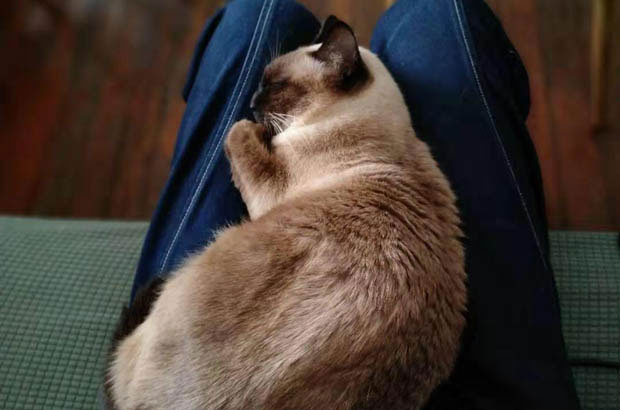When it comes to Siamese cats, one thing is certain: they are not for the faint of heart. These vibrant, vocal, and hyper-intelligent felines have a reputation for being the “dogs of the cat world,” and for good reason. If you’re considering bringing a Siamese into your home, prepare for a lifetime of energy, curiosity, and unapologetic affection. In this article, we’ll dive into the reality of owning a Siamese, the role of sterilization in their behavior, and why embracing their natural traits is key to a happy coexistence.
The Siamese Spirit: Born to Be Bold
Siamese cats are a breed unlike any other. From their striking blue eyes to their sleek, muscular build, they exude an air of confidence and curiosity. Unlike more laid-back breeds like British Shorthairs or Ragdolls, Siamese thrive on interaction. They’ll follow you from room to room, “talk” to you in a series of chirps and meows, and demand participation in their daily adventures. Whether it’s chasing a laser pointer, solving a puzzle feeder, or simply lounging on your shoulders like a parrot, they crave engagement.

This high energy is part of their genetic makeup. Bred for centuries as companions in Thai palaces, Siamese were valued for their alertness and loyalty. Today, that legacy lives on in their need for mental and physical stimulation. Bored Siamese can become destructive—think knocked-over vases, shredded curtains, and midnight zoomies that rival a rock concert. As one owner quipped, “A tired Siamese is a good Siamese… but good luck tiring them out.”
Sterilization: A Tool, Not a Miracle Cure
For many cat owners, sterilization (spaying/neutering) is seen as a magic wand to curb unwanted behaviors. With Siamese males, neutering often does reduce territorial aggression and roaming instincts. A neutered male may indeed settle into a calmer routine, trading territorial marking for couch naps and replacing dominance battles with snuggles. However, this doesn’t transform them into entirely different cats.
Case in point: My friend’s Siamese, Loki. As a six-month-old intact male, he was a whirlwind—spraying furniture, picking fights with other cats, and escaping through open doors like a fugitive. After neutering, his aggression diminished, but his energy remained. He still insists on morning fetch sessions, “helps” with household chores by batting at dish towels, and loudly protests if left alone for too long. Sterilization tamed his wilder instincts, but his core personality—playful, demanding, and deeply social—remained intact.
It’s important to manage expectations: Sterilization is a tool to address specific behaviors (like spraying or aggression), not a guarantee of a “quiet” cat. If your Siamese is still mischievous post-sterilization, don’t despair—it’s likely just their personality shining through.
The Myth of the “Quiet Siamese”
One of the biggest misconceptions about Siamese is that they can be as docile as other breeds with the right training. The truth? Their activity level is part of their charm. While they can learn tricks (yes, some Siamese can fetch or walk on a leash!), they’ll never be couch potatoes. Here’s what to expect:
Zoomies for Life: Even in old age, Siamese often retain a kittenish streak. A 10-year-old Siamese might still bolt around the house at 2 a.m., chasing an imaginary bug.
Vocal Virtuosos: They’ll meow, chirp, and trill to communicate everything from hunger to boredom. If you value silence, a Siamese might not be the best fit.
Social Butterflies: They thrive in households where someone is home often. Loneliness can lead to depression or destructive behaviors.
As the saying goes, “You don’t own a Siamese; they own you.” Their need for companionship is non-negotiable, and their idea of “bonding” might involve climbing your bookshelf while you work or kneading your chest at 5 a.m.
Embracing the Chaos: Tips for Living with a High-Energy Siamese
Rather than trying to change your Siamese’s nature, channel their energy into positive outlets:
Interactive Play: Use puzzle toys, feather wands, and laser pointers to engage their minds and bodies. Aim for 30+ minutes of play daily.
Vertical Spaces: Provide cat trees, shelves, and window perches—Siamese love to climb and observe their kingdom.
Routine and Rituals: Establish feeding times, play sessions, and cuddle hours to give them structure.
Embrace the Clinginess: Siamese are famously affectionate. Let them sit on your laptop, “help” with cooking, or sleep on your pillow—these are signs of trust.
Most importantly, celebrate their uniqueness. A Siamese’s “皮” (mischief) is a reflection of their intelligence and vitality. Every knocked-over plant or early-morning wake-up call is a reminder that you share your life with a creature who lives fully, loves deeply, and refuses to blend into the background.
The Bottom Line: Love Them for Who They Are
So, to answer the original question: Yes, sterilization can mellow a Siamese male’s behavior, but it won’t erase their innate energy or personality. If you’re hoping for a quiet, low-maintenance cat, look elsewhere. But if you’re ready for a lifetime of adventure, laughter, and unwavering devotion, a Siamese might just be your perfect match.
As one veteran Siamese owner put it, “They’re not for everyone, but for those who get them, they’re everything.” So embrace the chaos, stock up on catnip toys, and get ready for a love story like no other—one filled with purrs, protests, and plenty of “Why did you knock that over?!” moments.
Leave a Reply